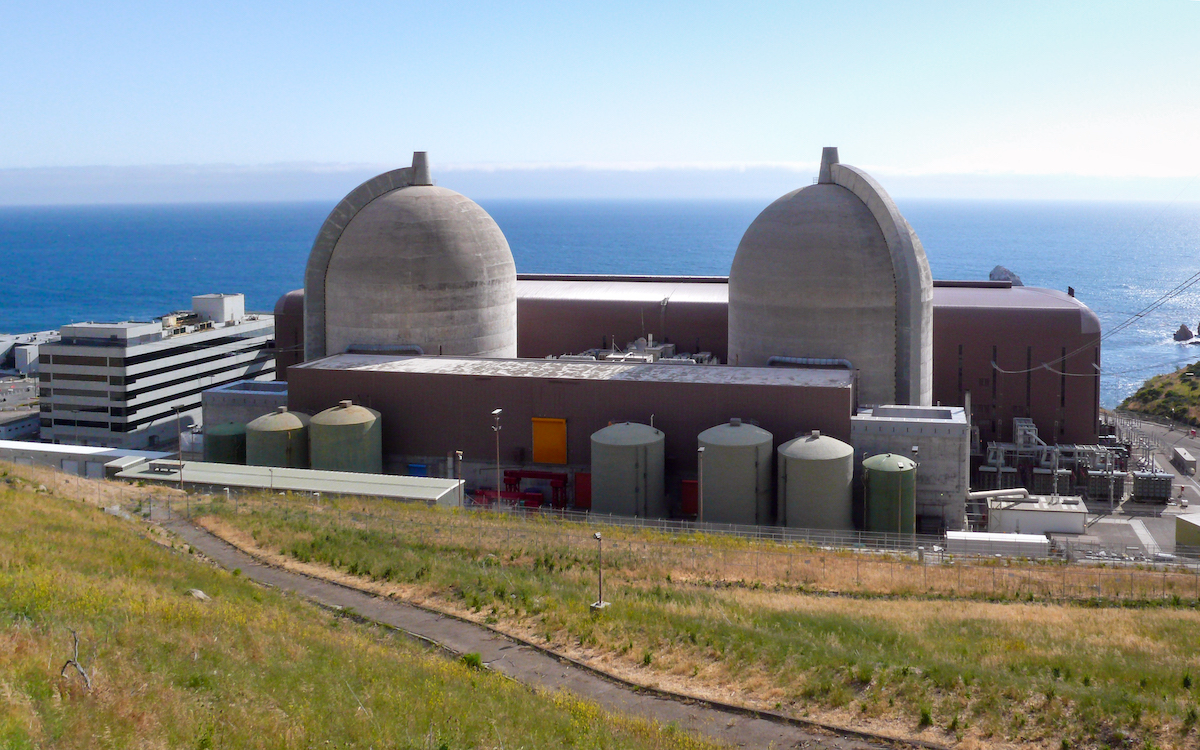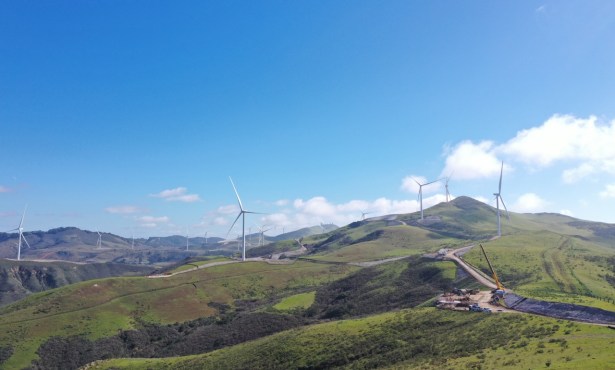State Lands Commission Approves Extension of Diablo Canyon’s Lease
Nuclear Power Plant May Stay Put Through October 2030

The slow-motion crawl to keep the nuclear power plant at Diablo Canyon running vaulted another hurdle on Monday when the State Lands Commission approved extending the plant’s mean high-tide-line lease off San Luis Obispo County. The lease extension, which goes through October 2030, is part of California’s push to retain the electricity generated by Diablo after the years leading to epic drought, low reservoir levels, and extreme summer heat — despite the fact that operator PG&E had decided in 2018 to abandon the site and not continue with its permit extension.
The effort to persuade Pacific Gas &Electric to re-up included a $1.4 billion loan from the State Legislature and $1.1 billion from the feds — the federal funding to be used to pay back the state — and the utility resumed seeking a new permit from the Nuclear Regulatory Commission, which gave PG&E until the end of this year to file its application.
The utility noted in a press release that it had a number of state and federal regulatory decisions ahead before the plant can be relicensed, but called the State Lands Commission vote a “key milestone of Senate Bill 846,” the legislation that adopted the loan, along with several regulatory and oversight requirements. PG&E stated Diablo was the state’s largest producer of clean energy, to the tune of 2,300 net megawatts of power — enough to light up about 1.7 million homes.
The land-lease agreement makes a key connection that has been overlooked in the press, said David Weisman of the Alliance for Nuclear Responsibility. “Up ’til now,” he said, “seismic issues focused on radiological release and public safety.” The lease, however, asks about interruptions and costly purchases of replacement electricity — issues that could result from damage to the non-radiological structures that support the facility’s generation capability. which could include the administration building and the intake structures. “That’s what happened at Japan’s Kashiwazaki plant, years before Fukushima,” Weisman said.
Opposed to the state and PG&E are groups like Friends of the Earth and the Mothers for Peace, which filed with the Ninth Circuit U.S. Court of Appeals to challenge the NRC’s decision. “In permitting the licensing of nuclear reactors, Congress never envisioned that any reactor would operate past its initial 40-year limit without thoroughly vetting the safety and environmental impacts of continued operation and allowing the public to participate in the process,” said Diane Curran, attorney for Mothers for Peace.
The group also filed comments on a draft NRC environmental impact statement, stating that the seismic study the agency relied upon had been commissioned by PG&E. Peter Bird, a professor emeritus of earth sciences at UCLA, submitted a declaration in support of Mothers for Peace: “The evaluation done by PG&E did not take into account or incorporate certain up-to-date scientific developments (e.g., GPS and computer modeling) in estimating the activity of the faults that the Diablo Canyon plant sits among.”
Those lines form a series of faults said to be similar to those under Turkey and Syria that caused the magnitude 7.8 quake that killed nearly 60,000 people in February. “If a Turkey-like earthquake were to occur on the California coast, the devastation would be compounded by a radiological accident,” said Linda Seeley, a spokesperson for Mothers for Peace.
The idea that seismic activity could threaten Diablo’s structures is not universally held. Gene Nelson of Californians for Green Nuclear Power, Inc., stated that while Turkey and Diablo Canyon are both affected by tectonic action, Turkey sits astride three tectonic plates, while Diablo is affected by two — the Pacific and the North American plates, which are grinding past each other laterally. “In Turkey, the three different plates make for much more jumbled up and complicated tectonic environment, which is not comparable to what’s going on in Southern California,” Nelson said. He added that the 2003 San Simeon quake — which killed two people in Paso Robles and caused an estimated $250 million in damages — did not affect the nuclear plant, which was running at full power at the time.
Members of these groups took part in a session with the NRC organized by Congressmember Salud Carbajal on May 3. Opponents and proponents of the nuclear facility presented all arguments to the commission — one man argued that opponents were worried they may die of radiation poisoning: “May?” he asked. “Is there any of you in here that aren’t going to die?” The three-hour meeting weighed toward proponents of the facility, though the NRC commissioners wearily emphasizing that their role was exclusively about safety at the plant.
Diablo provides as much as 8.6 percent of California’s electricity, but the current licenses for its two nuclear reactors terminate in 2024 and 2025. According to the County of San Luis Obispo’s Diablo project page, the plant’s Independent Safety Commission will hold a public meeting on June 28-29. The draft Environmental Impact Report on the parallel decommissioning process for the nuclear plant is due to be available in June or July. A month or two later, the California Energy Commission and the Public Utilities Commission will be comparing the relative economics of nuclear versus other power providers in a cost analysis.
Correction: It was not the control room that David Weisman spoke of in terms of earthquake vulnerability, but other structures; the reporting error has been corrected in this version. Also, the May 3 meeting held a preponderance of Diablo proponents, rather than being a draw.



